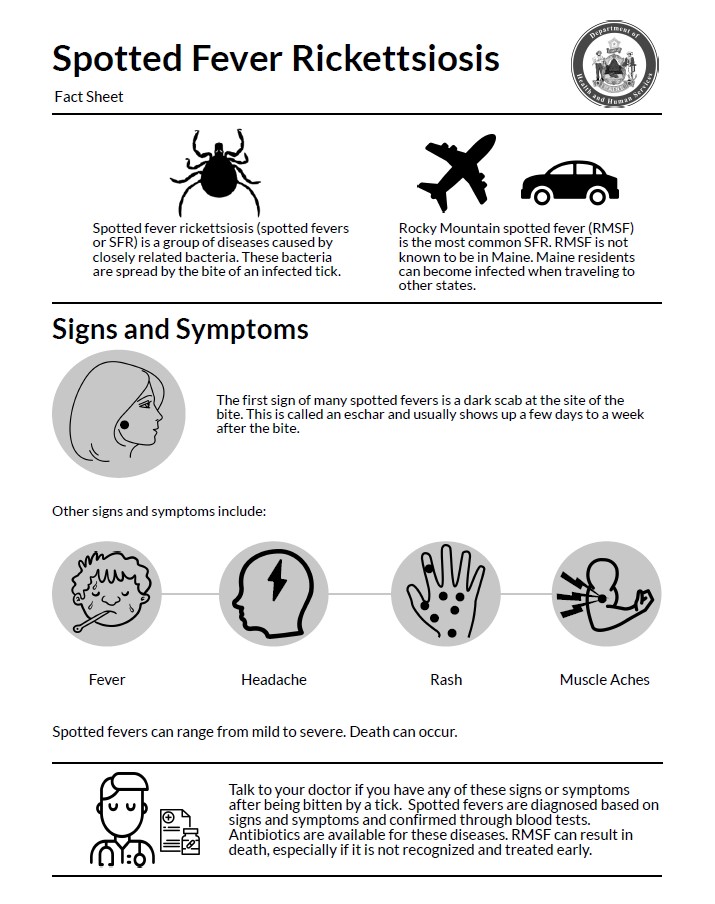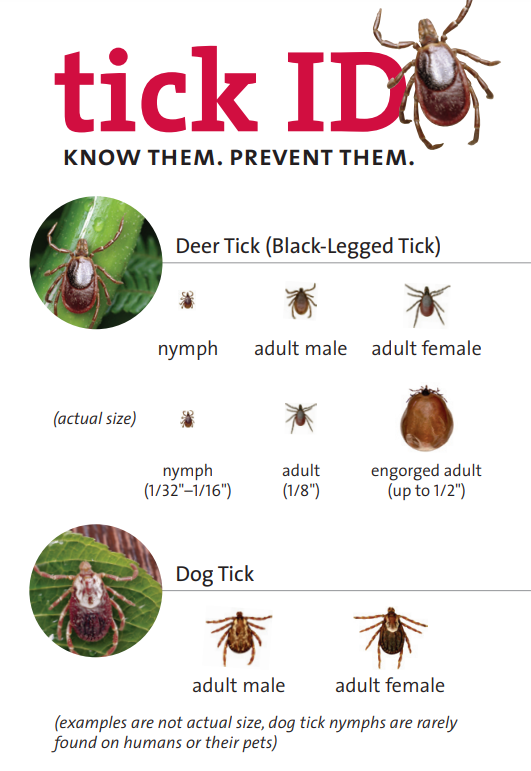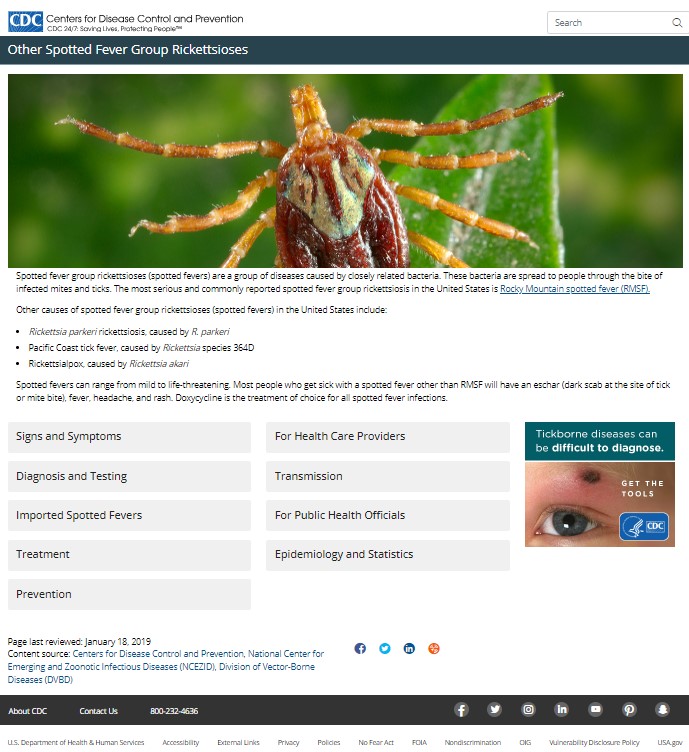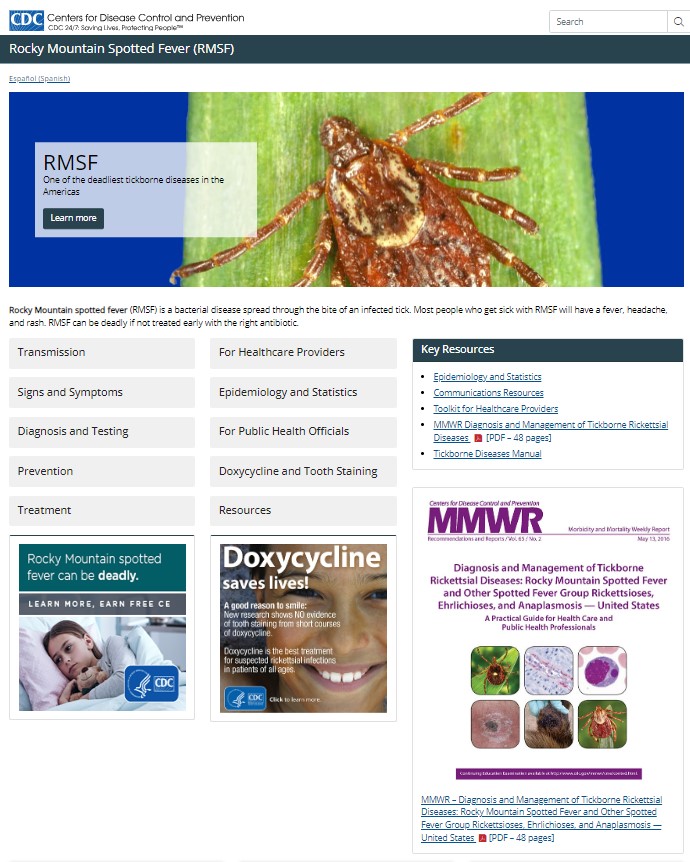DHHS → MeCDC → Disease Surveillance → Epidemiology → Vector-borne Diseases → SFR
Spotted Fever Rickettsiosis (SFR)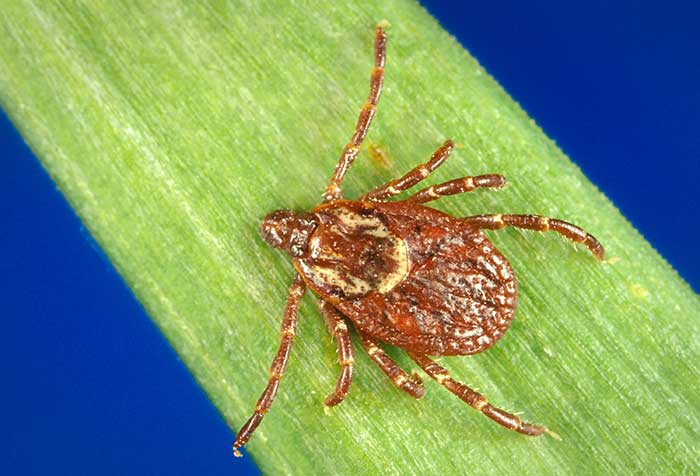
On this page:
- About Spotted Fever Rickettsiosis
- Symptoms
- Prevention
- Resources for Educators
- Reports and Publications
- Resources
Photo credit: US CDC
About Spotted Fever Rickettsiosis
Spotted fever rickettsioses (SFR) are a group of diseases caused by closely related bacteria. They spread to people through the bite of infected ticks. The most serious and common of SFRs in the U.S. is Rocky Mountain Spotted Fever (RMSF).
Some of the bacteria that cause SFR include:
- Rocky Mountain spotted fever, caused by Rickettsia rickettsii
- Rickettsia parkeri rickettsiosis (also called Tidewater spotted fever or Boutonneuse fever), caused by Rickettsia parkeri
- Pacific Coast tick fever, caused by Rickettsia philipii
- Rickettsialpox, caused by Rickettsia akari
How does SFR spread?
Spotted fever rickettsioses spread to people through the bite of infected ticks. Rocky Mountain Spotted Fever spreads through the bite of infected American dog ticks, lone star ticks, or brown dog ticks. Of these three ticks, Maine only has American dog ticks. So far, American dog ticks in Maine are not known to carry the bacteria that causes RMSF. This could change in the future.
Symptoms
The first sign of many spotted fevers is a dark scab at the site of the bite. This is an eschar and usually shows up a few days to a week after the bite. Other symptoms include:

Fever

Headache

Muscle pain

Rash
Spotted fevers can range from mild to severe. Death can occur, especially if you do not treat the infection early.
Talk to a health care provider if you have any of these symptoms after a tick bite. They diagnose spotted fevers based on symptoms and confirm them through blood tests. Antibiotics are available to treat these infections.
Prevention
Prevent Tick Bites
The best way to prevent spotted fevers is to prevent tick bites in the first place. Take these simple steps every day to prevent tick bites:

Wear light-colored, long-sleeved clothing and pants. Tuck your pants into your socks.

Use an EPA-approved bug spray.

Stay in the middle of trails.

Do daily tick checks and check your pets for ticks.
Protect Your Yard From Ticks
You can make your yard a tick-safe zone:
- Keep the lawn mowed.
- Keep leaves raked and get rid of leaf piles.
- Move wood piles away from the house. Mice like to live here and can bring ticks with them.
- Move birdfeeders away from the house, gardens, and yard toys. Deer and mice like birdfeeders and can bring ticks into the yard.
- Use crushed stone or woodchips to make a tick-safe barrier around your yard. This should be 3-feet wide to separate the yard from the woods and keep ticks from crossing into the yard.

To learn more about tick bite prevention and how to keep ticks out of your yard, visit Tick Frequently Asked Questions.
Resources for Educators
Maine CDC developed vectorborne school curricula for 3rd-8th grade classrooms. The curriculum aligns with Maine Learning Results. School nurses, teachers, and other youth leaders are encouraged to use this resource in their classrooms.
